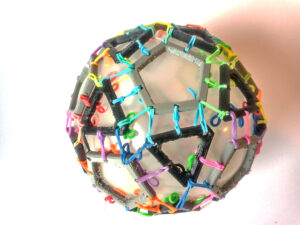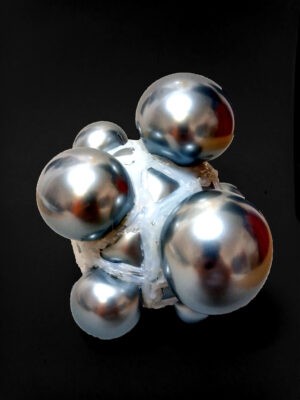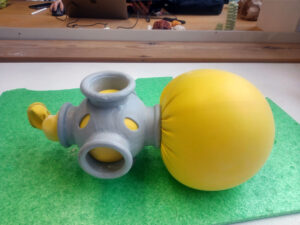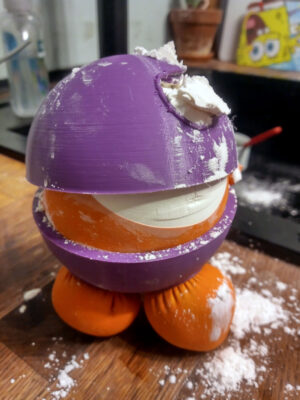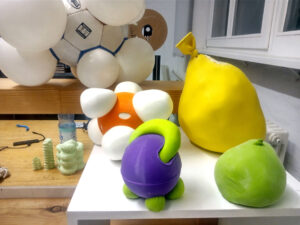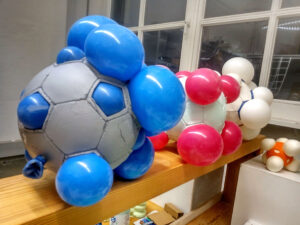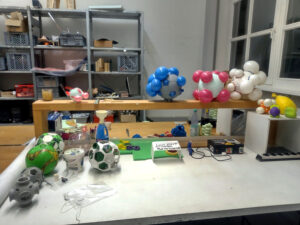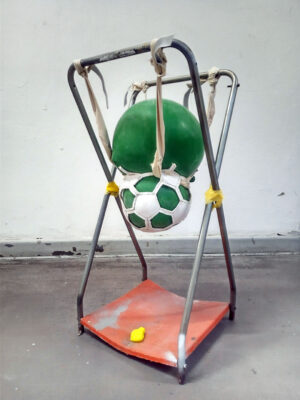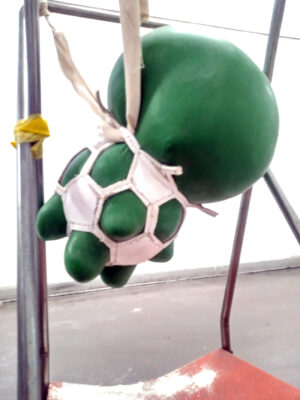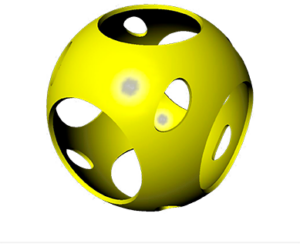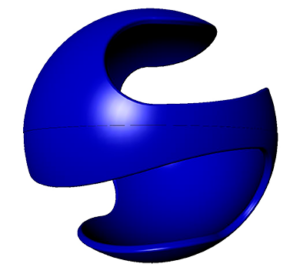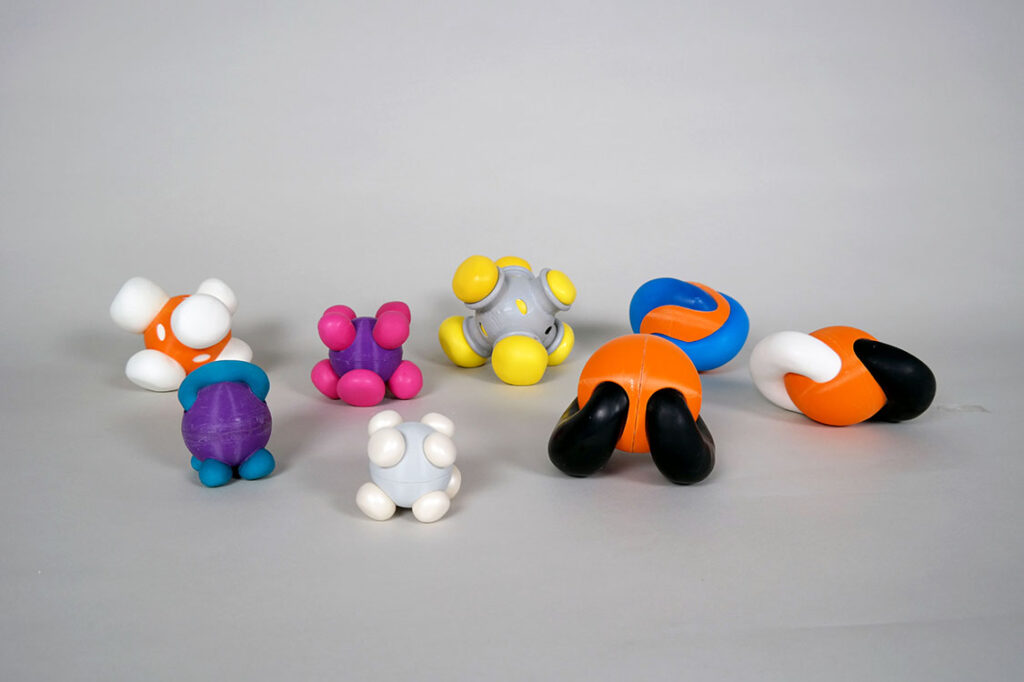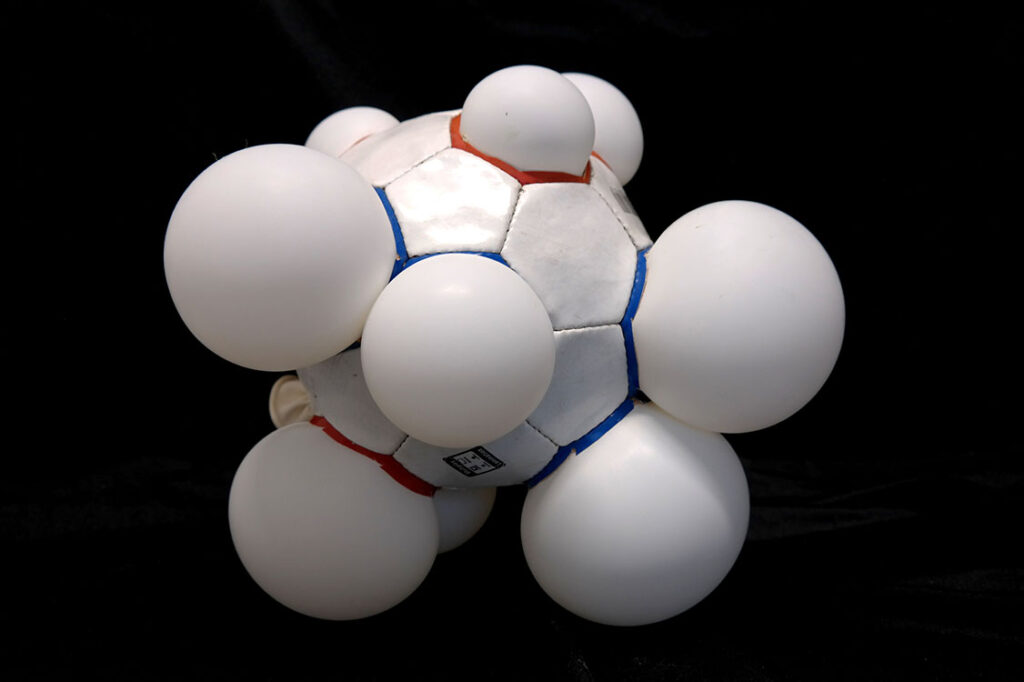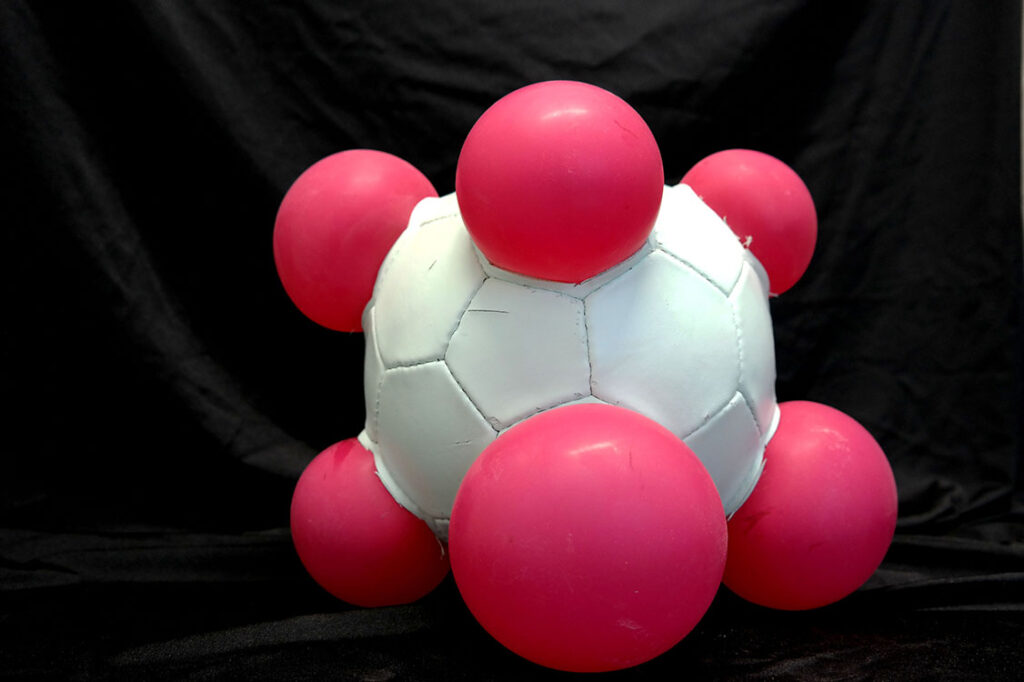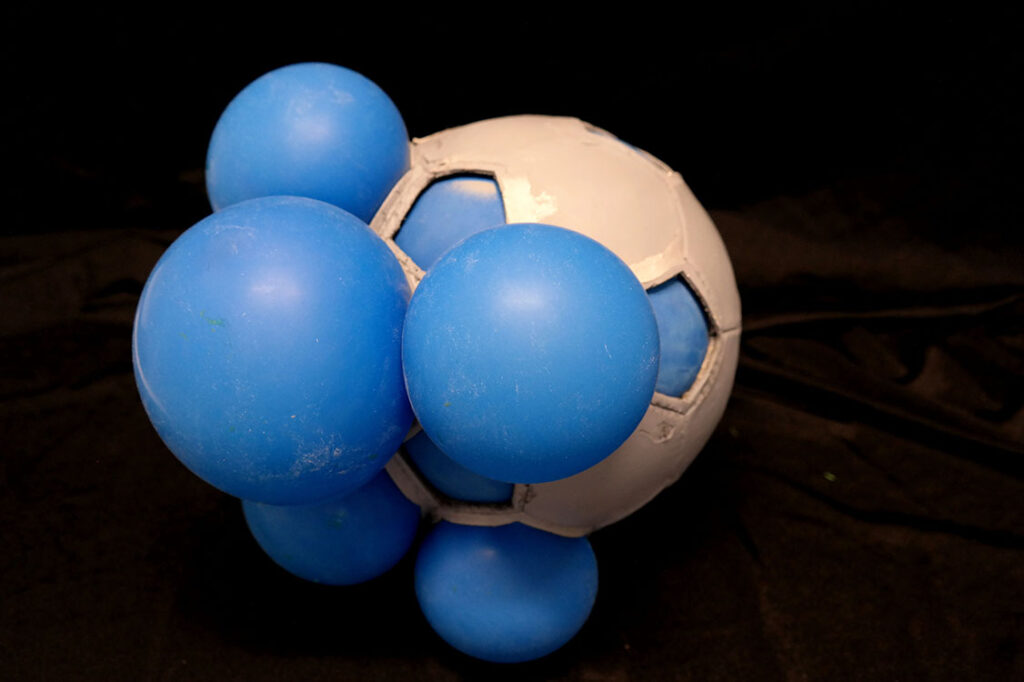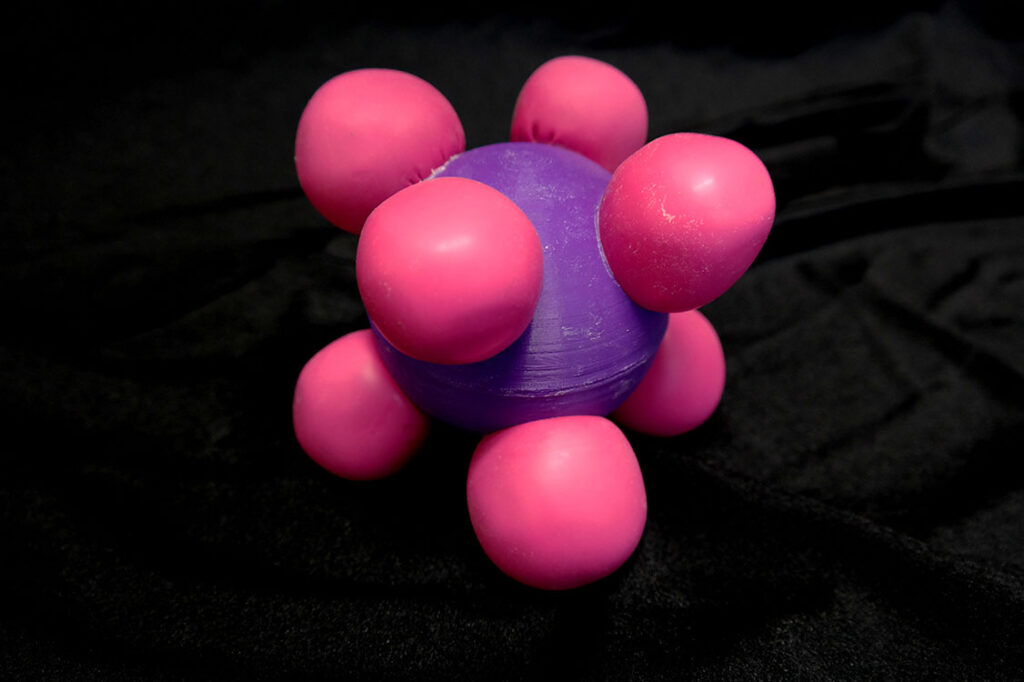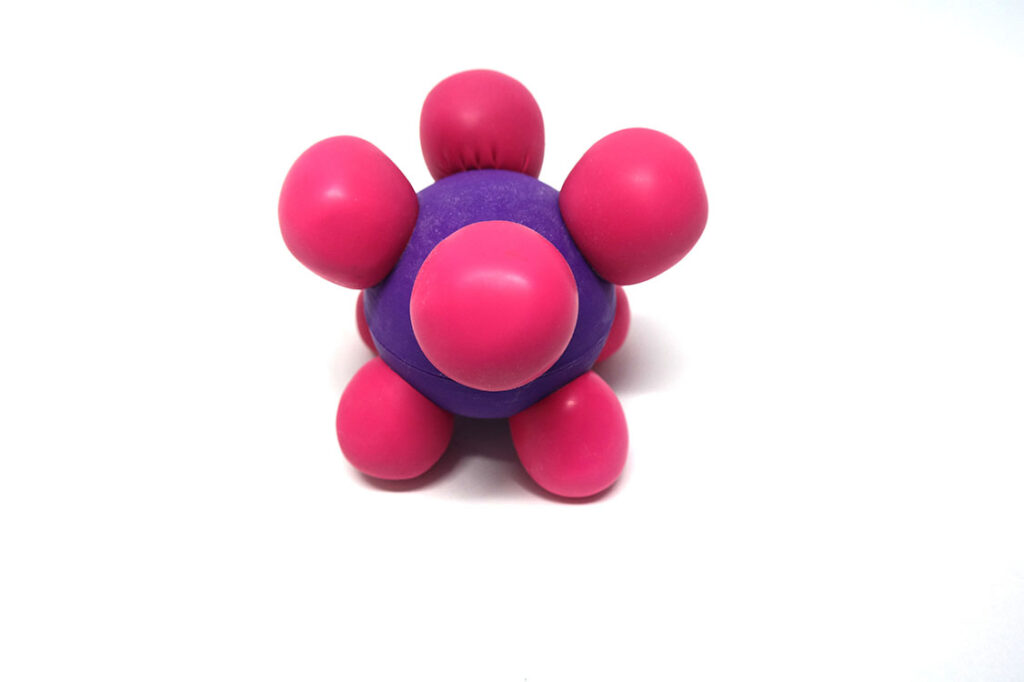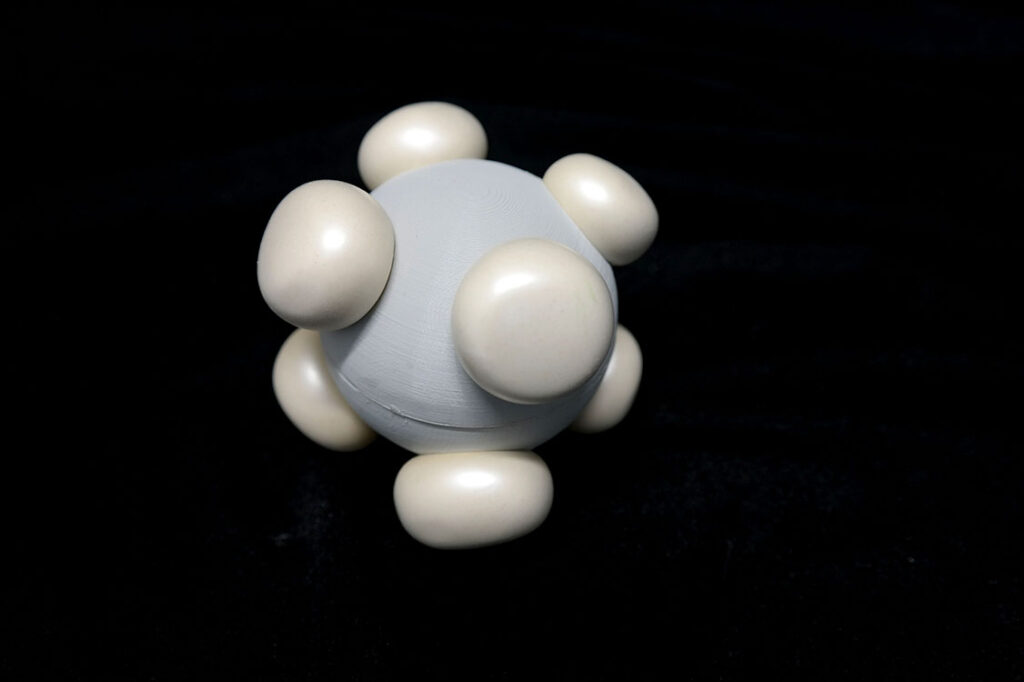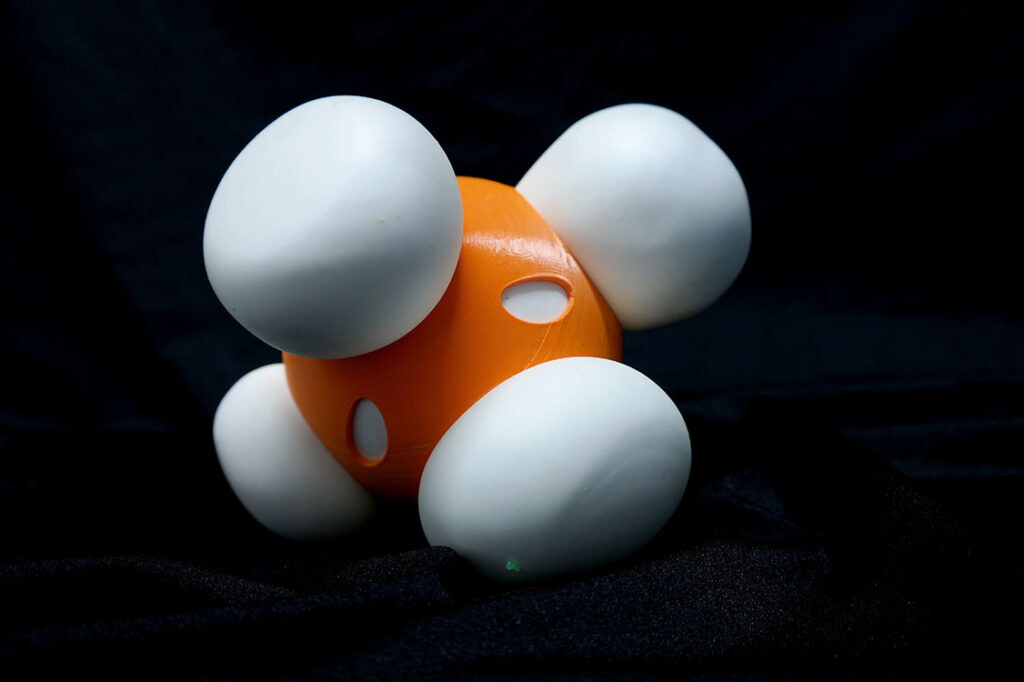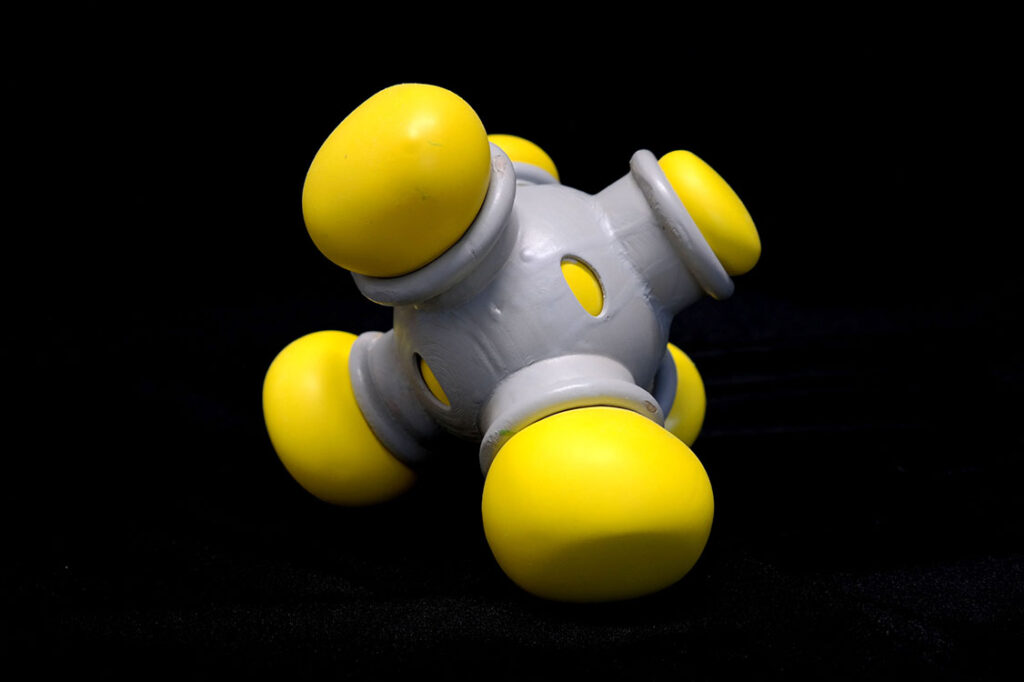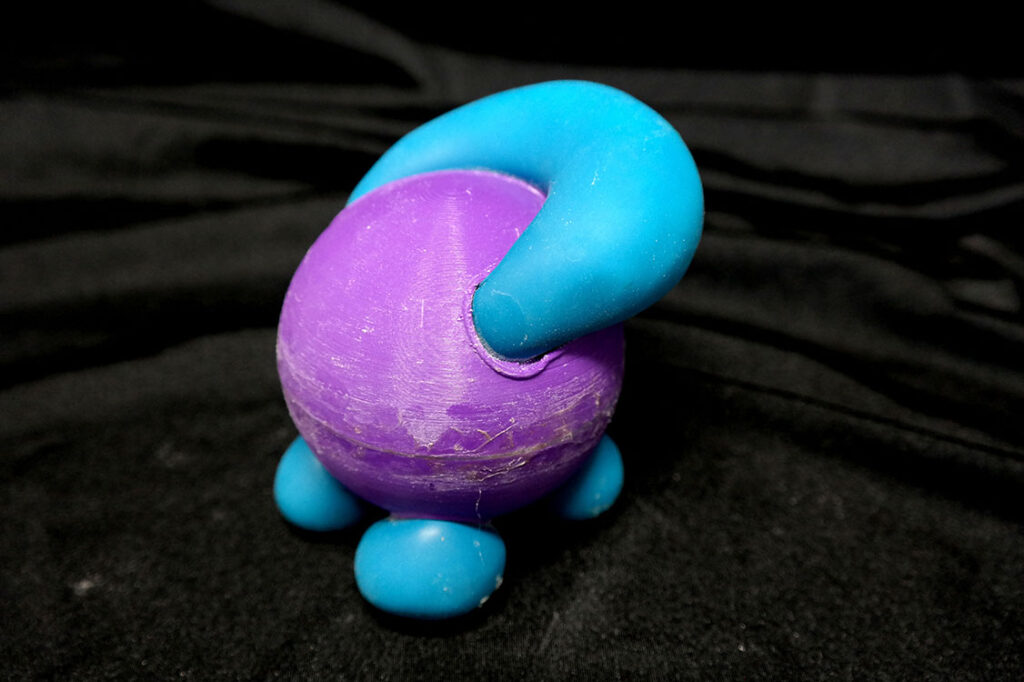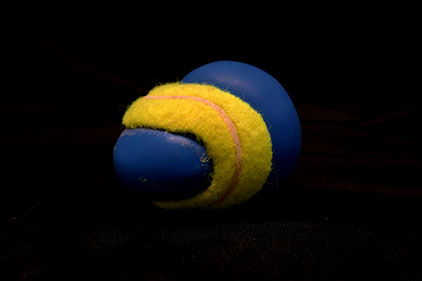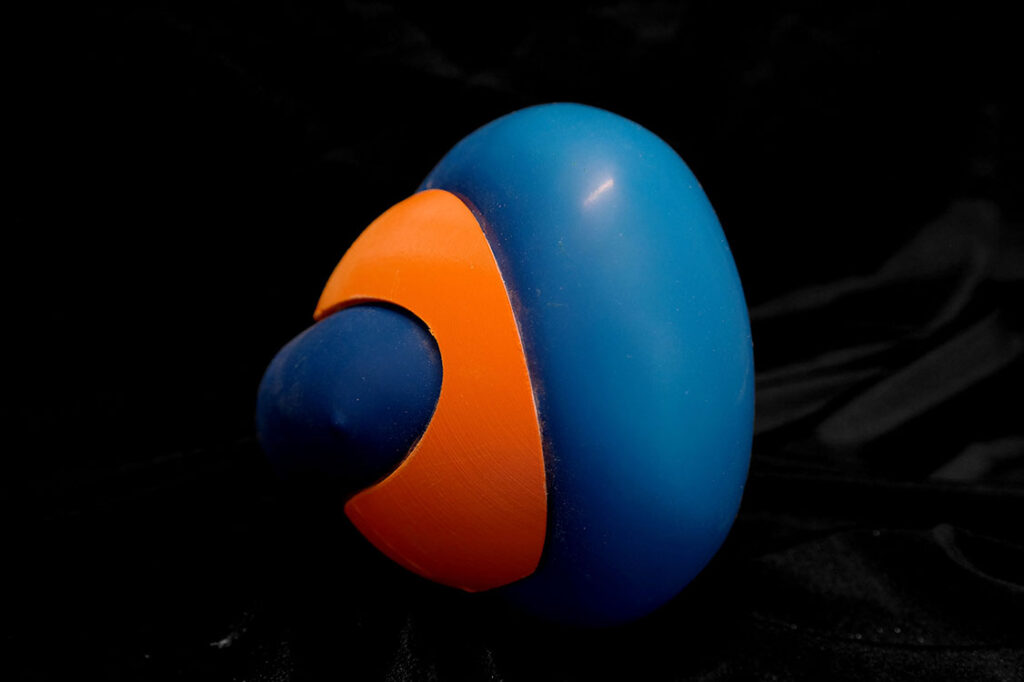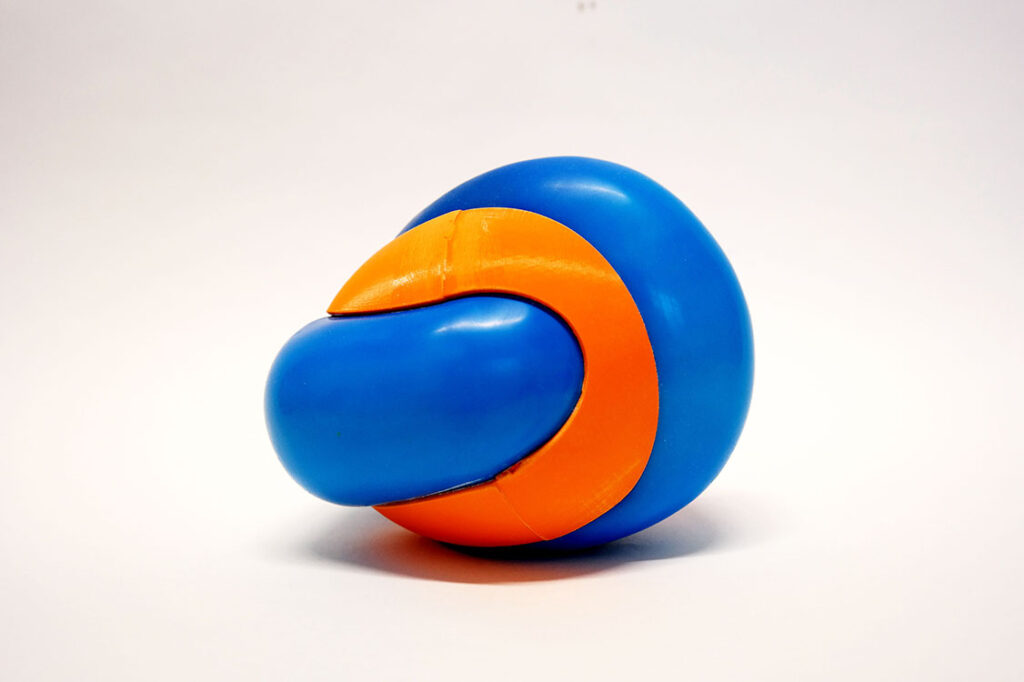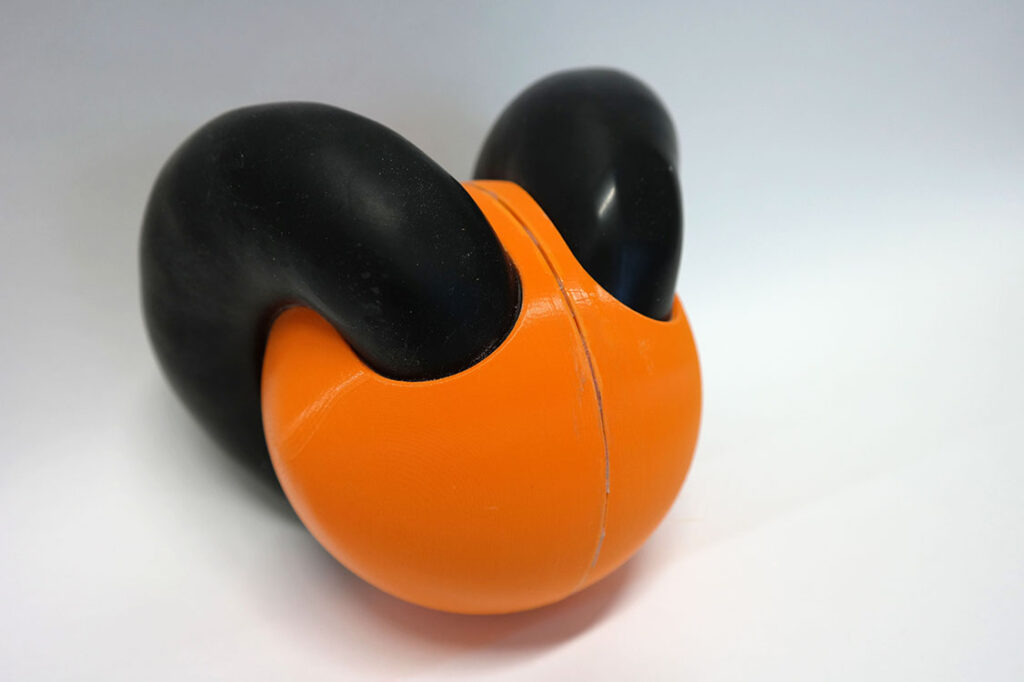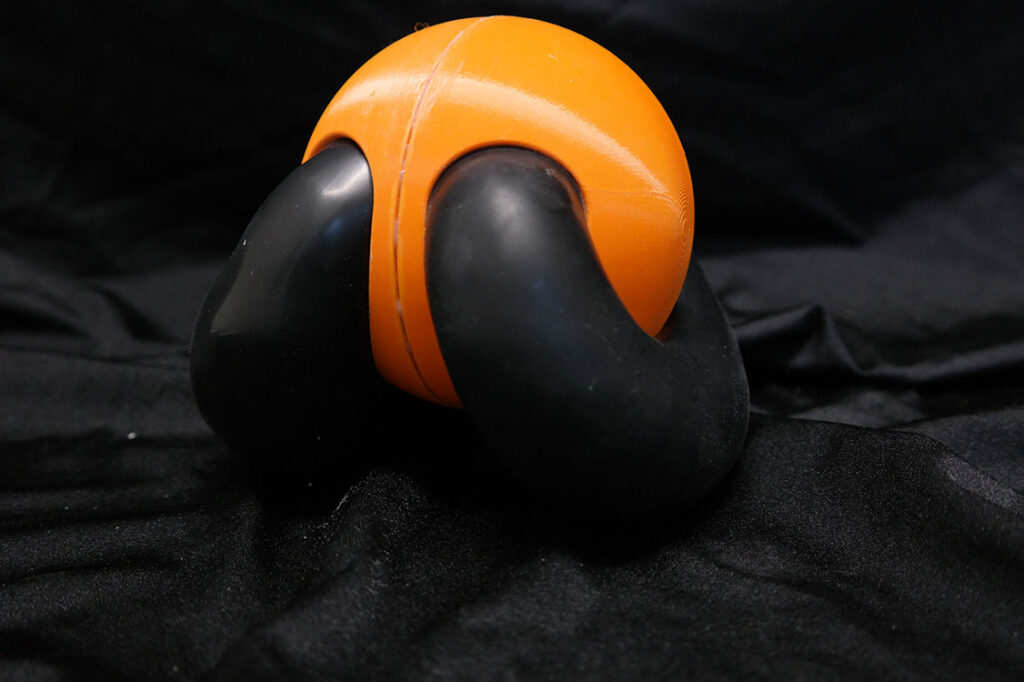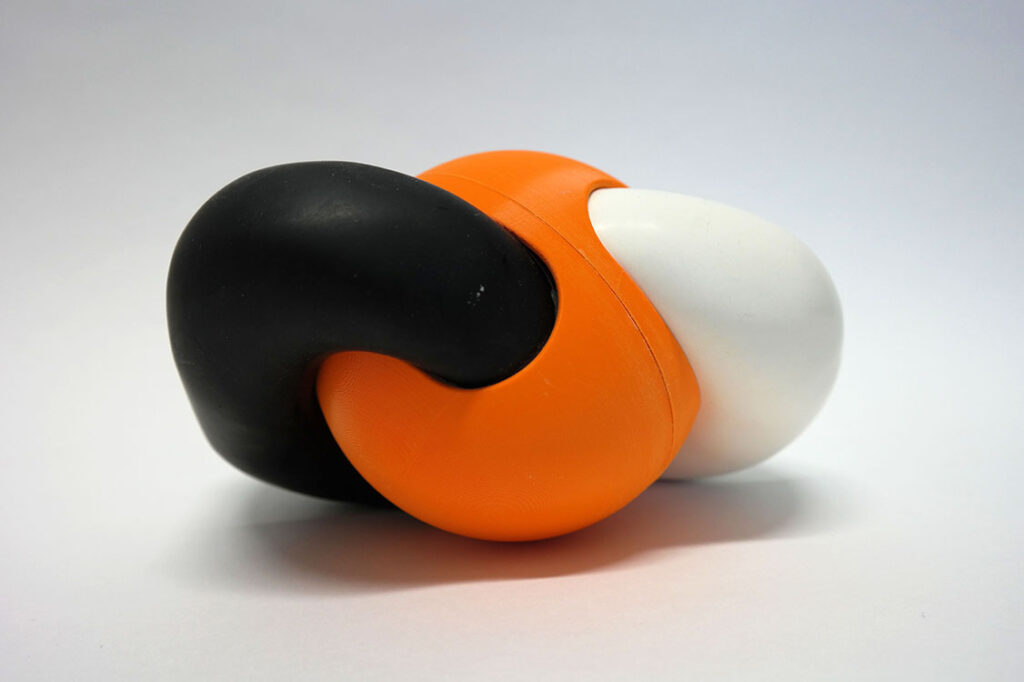Hardshell Softcore
Wie eine Form entsteht und sich weiterentwickelt.
Ausgangspunkt ist die Sphäre. Basierend auf dem Muster von Sportbällen wie dem Fußball, Basketball und Tennis Ball habe ich angefangen, diese auseinanderzunehmen. In der ersten Testreihe habe ich ein Muster ausgewählt, dieses als Exoskelett repliziert und mit flexiblem Filament (TPU) 3D gedruckt.
Fünf Winkel und Dreiecke bestimmen die Kugel. Die einzelnen Elemente werden mit sogenannten „Loom Rubber Bands“ zusammengehalten. Beim Einsetzen und Aufblasen des Ballons kann die Kugel durch die Elastizität der Bänder und Formelemente vergrößert werden. Jedoch reagierte die flexible Außenhülle mit der elastischen Innenstruktur und das Ergebnis war nicht zufriedenstellend – es behält die gleiche Form.
Anhand dieses Prototyps habe ich zwei Restriktionen festgelegt: es bedarf einer harten Schale und einem weichen Kern.
Auf der ursprünglichen Grundidee des Balles erfolgten mehrere schnelle Experimente.
Für eine neue Formfindung in der ursprünglichen Geometrie habe ich Teile aus den Kugeln geschnitten und sie mit Luftballons gefüllt. Im Anschluss wurde das Befüllen mit Luft bis zum Maximum getestet. In weiteren Experimenten dieser Art konnte ich die Koinzidenz so bewusst kontrollieren, indem ich Muster, teils symmetrisch, teils ungleichmäßig, durch Ausschnitte in den Bällen erstellt habe.
Um mich von den typischen Merkmalen der Sportbälle zu entfernen habe ich lediglich die, auf der Kugel erzeugten, Lochmuster übernommen, in das 3D-Programm Rhino kopiert und damit Geometrien aus PLA-Filament gedruckt.
Aus vorherigen Experimenten mit den aufgeblasenen Ballons in einem Fußball erwiesen sich die Ergebnisse jedoch als wenig flexibel, was die mögliche Weiterentwicklung der resultierenden Form einschränkte. Die Fähigkeit des Morphens sollte erhalten bleiben.
Dafür wurden die Luftballons mit Mehl gefüllt – wie Antistressbälle. Durch die elastische Oberflächenspannung des Latex entsteht das zusätzliche Potenzial einer weiteren Verformung und Veränderung der aus den Löchern austretende Volumen. Das Ergebnis sind flache, platte, lange oder abgerundete Formen durch eine unterschiedliche Anordnung der Löcher in der Schale und der Formbarkeit der mit Mehl gefüllten Ballons.
Inspiriert ist das Projekt von kaputten Fahrradreifen, bei denen der Schlauch herausragt und Luftblasen bildet, oder den gerissenen Nähten eines Sportballs. In diesen Fällen verlieren die Objekte ihre Funktion und wirken einschränkend auf die Nutzung. Als Einschränkung des praktischen Nutzens verwende ich Formkomponenten, um meine Prototypen herzustellen. Damit verleihe ich der entarteten Sphäre eine formale Ästhetik. Darüber hinaus könnten diese Formen im Möbelbau und Design oder in der Architektur verwendet werden.
How a form develops and evolves.
Starting point is the sphere. Based on the pattern of sports balls like the soccer, basketball and tennis ball I started to take them apart. In the first series of tests, I chose a pattern, replicated it as an exoskeleton, and 3D printed it with flexible filament (TPU).
Five angles and triangles define the ball.
The individual elements are held together with so-called „Loom Rubber Bands“. When the balloon is inserted and inflated, the sphere can be enlarged due to the elasticity of the bands and form elements. However, the flexible outer shell reacted with the elastic inner structure and the result was not satisfactory – it keeps the same shape.
Based on this prototype, I set two restrictions: it requires a hard shell and a soft core.
Several quick experiments were made on the original basic idea of the ball.
To find a new shape in the original geometry, I cut parts from the balls and filled them with balloons. Afterwards the filling with air was tested to the maximum. In further experiments of this kind, I was able to control the coincidence so consciously by creating patterns, some symmetrical, some uneven, through cutouts in the balls.
To move away from the typical features of sports balls I simply took the hole patterns created on the ball, copied them into the 3D program Rhino, and used them to print geometries from PLA filament.
However, from previous experiments with the inflated balloons in a soccer ball, the results proved to be not very flexible, which limited the possible further development of the resulting shape. The ability to morph should be preserved.
For this purpose, the balloons were filled with flour – like anti-stress balls. The elastic surface tension of the latex creates the additional potential of further deformation and change in the volumes exiting the holes. The results are flat, platy, long or rounded shapes due to a different arrangement of the holes in the shell and the malleability of the flour-filled balloons.
The project is inspired by broken bicycle tires, where the tube protrudes and forms air bubbles, or the torn seams of a sports ball. In these cases, the objects lose their function and have a limiting effect on their use. As a limitation to practical use, I use molded components to create my prototypes. In this way, I lend a formal aesthetic to the degenerate sphere. Furthermore, these forms could be used in furniture making and design or in architecture.
